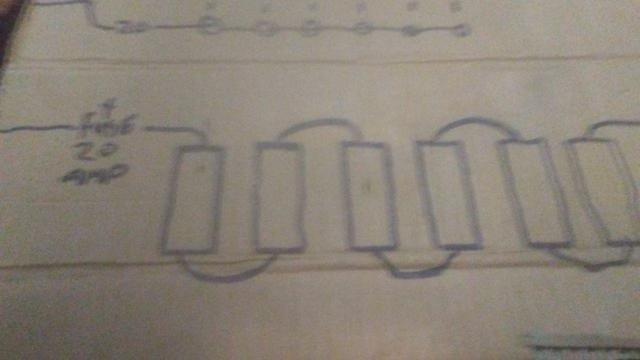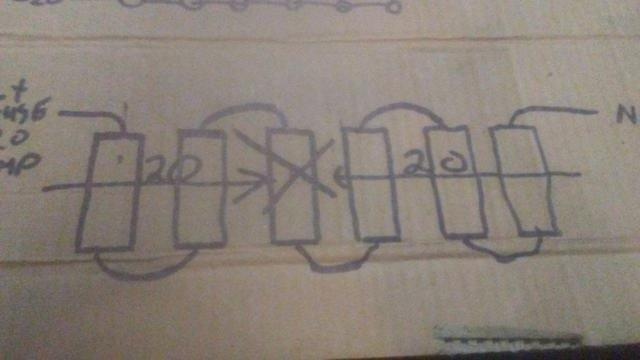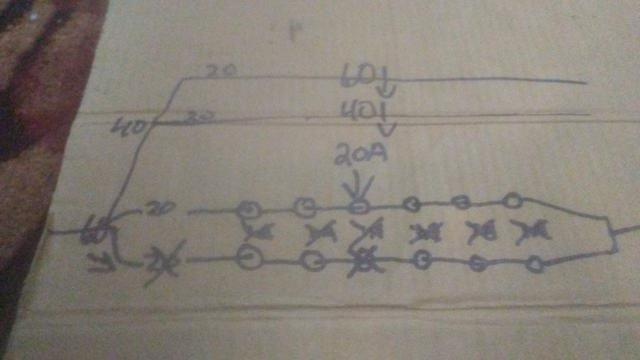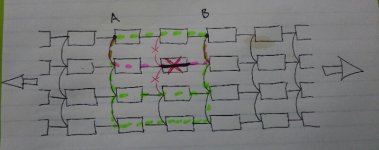serious_sam said:
You need to decide why you want fuse wire: what fault it is providing protection from? Then calculate current flows (a circuit diagram helps) during that fault condition.
From the incomplete wiring in the photo, I'm still not seeing how parallel and series fuse wires provide protection. Each cell terminal is connected by 2or3 wires (1 series and 1or2 parallel?) so in any "fault" event, you need all 3 wires to blow to fully disconnect the cell. That makes no logic.
If you want to fuse the cells, do it like it's been previously done. Fuse each cell individually to a main "bus". Then only one fuse wire needs to blow to fully disconnect the cell, and it has minimal effect on the rest of the pack.
Also as has been mentioned by docw009, it means you need access to the cell and fuse wire to perform any repair. PITA. And you need some way to indicate if/when/where a fault has occurred.
im really not worrying about series fuses im just looking at parallel
I understand accessing a blown fuse wire is a PITA.
walking a bike home because 1 cell took out an entire parallel group is a pain in a few things and I still have to open the pack whether it is fused or not.
once I had 1 dead cell it was 0 volts, my bike still ran and operated but the volt sag was very noticeable and I lost 2.5ah. so I opened my pack, it was a PITA
another time I had an entire p group go dead, it was the backpack battery I use when I need more range. so 20 km from home I had to pedal, that was a double PITA
I really don't understand fusing batteries. no experience at it, so if im fusing the series connections to a bus where all the amps are flowing I cant help myself but to think that im creating a lot of unnecessary heat. 15 amps through a series fuse wire
from those 2 experiences, im probably wrong. I started thinking how many amps flow sideways (p groups) there really shouldn't be any except when balance charging or when it starts shorting it can pull upto 60 amps from the 3 other cells in the p group
when charging, how many amps go sideways to the bms. if you put in 5 amps on a 13s4p pack, as the bms starts burning off energy its not burning off 5amps on 1p, the other 12p are still taking amps and eventually the 13p will absorb the 5amps split between them half amp max but the last bit of charging the charger starts dropping the amps being supplied.
my charger dropped to half an amp by the time it was done. so half an amp split 13 times is nothing.
as far as I can tell the parallel connections are just for keeping a pack balanced, no real amps flow
my thinking is by just parallel fusing, I can lose 1 cell and still get home but if I lose 1 cell and it takes out the entire p group my battery is dead and im pedalling home. no matter what, its a pain in the ass lol









